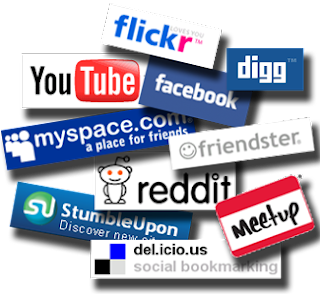 Earlier this year I happened upon a blog post from Geordie Adams via a tweet from Tim O’Reilly. In it Geordie explains what he thinks is the major issue facing social media enthusiasts in the public sector:
Earlier this year I happened upon a blog post from Geordie Adams via a tweet from Tim O’Reilly. In it Geordie explains what he thinks is the major issue facing social media enthusiasts in the public sector:
“Cultural change [is] the biggest impediment to a higher adoption rate of social media in the public sector… [it] gets mentioned, everyone agrees, and then conversation turns to a technical or implementation discussion. To not [dig into culture change] is robbing important momentum from public sector social media evolution.” – Geordie Adams, Publivate (full article)
Geordie’s right, I can’t even recall the amount of times I have heard variations of the phrase “Culture eats strategy for breakfast”. Essentially, even the most well thought out strategic approaches are vulnerable to the workplace culture. It would seem that when social media meets the public sector it is culture, not content, that is king. Culture is eating breakfast in plenaries, in tweets and in blog posts on a daily basis all over the world. Initially I thought it was a great line, its retweetable, to the point, and when I hear it I implicitly understand the connotation.
Over my dead body
As catchy as it is, I would hate to see it on my tombstone. If we don’t do a better job tackling the problem we might as well give up, call the undertaker and order our tombstones with that very inscription. I can see mine already:
Here lies Nick
He went quick
always circled by a vulture
its name was culture
While Geordie’s list of cultural problems (failure, engagement, and transparency) is a good place to start , I prefer to start with what I think underlies all of them: complacency. It would seem that over the years many of us have earned the fat cat stereotype; even those who haven’t earned it directly are now guilty by association.
 I recently came across this funny (and too true) post by Todd Heim on social media villains that piqued both my long-time interest in super-heroes and super-villains and all things Government 2.0 too. While we pump up the Gov 2.0 Heroes (and even had an entire Day dedicated to them), and we hold conferences to highlight the work done by these heroes, I haven’t seen the opposite side get its due. Well, I’d like to dedicate this post to the people who make government innovation so difficult, the people who have stood in our way for years, the people who have been classified as hurdles, obstacles, and barriers – the Villains of Gov 2.0. Link to entire post on Steve Radick’s Social Media Strategery blog
I recently came across this funny (and too true) post by Todd Heim on social media villains that piqued both my long-time interest in super-heroes and super-villains and all things Government 2.0 too. While we pump up the Gov 2.0 Heroes (and even had an entire Day dedicated to them), and we hold conferences to highlight the work done by these heroes, I haven’t seen the opposite side get its due. Well, I’d like to dedicate this post to the people who make government innovation so difficult, the people who have stood in our way for years, the people who have been classified as hurdles, obstacles, and barriers – the Villains of Gov 2.0. Link to entire post on Steve Radick’s Social Media Strategery blog Last month Malcom Gladwell wrote an article in the New Yorker: “Small Change: Why the Revolution Will Not be Tweeted.”
Last month Malcom Gladwell wrote an article in the New Yorker: “Small Change: Why the Revolution Will Not be Tweeted.”
 Not all that long ago, the scientific community was justifiably ecstatic about having achieved mapping of the human genome – The Human Genome project. The promise was that by understanding genetic mapping we could find cures for disease, disability, and perhaps
Not all that long ago, the scientific community was justifiably ecstatic about having achieved mapping of the human genome – The Human Genome project. The promise was that by understanding genetic mapping we could find cures for disease, disability, and perhaps  Earlier this year I happened upon a blog post from Geordie Adams via a
Earlier this year I happened upon a blog post from Geordie Adams via a 
 Since the advent of Web 2.0 we have witnessed the increased speed and ease with which we can use the Internet and our IT networks to connect with people and manage information. Now with the onset of utilizing these tools in a two-way interactive manner, the concepts of collaboration, transparency and knowledge transfer have taken up centre stage within most organizations and not surprisingly now inside the public sector as well.
Since the advent of Web 2.0 we have witnessed the increased speed and ease with which we can use the Internet and our IT networks to connect with people and manage information. Now with the onset of utilizing these tools in a two-way interactive manner, the concepts of collaboration, transparency and knowledge transfer have taken up centre stage within most organizations and not surprisingly now inside the public sector as well. What does the term “PC” mean to you? Politically correct? Wrong! “PC” means POLITICALLY CONNECTED! How connected are you to your constituents? The number one way to get real feedback and converse with the folks who elected you is through SOCIAL MEDIA!
What does the term “PC” mean to you? Politically correct? Wrong! “PC” means POLITICALLY CONNECTED! How connected are you to your constituents? The number one way to get real feedback and converse with the folks who elected you is through SOCIAL MEDIA!